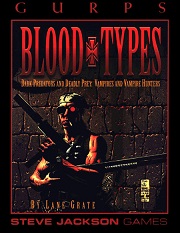
The undead are beings in mythology, legend, or fiction that are deceased but behave as if alive. Most commonly the term refers to corporeal forms of formerly alive humans, such as mummies, vampires, and zombies, which have been reanimated by supernatural means, technology, or disease. In some cases, the term also includes incorporeal forms of the dead, such as ghosts.

A vampire is a mythical creature that subsists by feeding on the vital essence of the living. In European folklore, vampires are undead humanoid creatures that often visited loved ones and caused mischief or deaths in the neighbourhoods which they inhabited while they were alive. They wore shrouds and were often described as bloated and of ruddy or dark countenance, markedly different from today's gaunt, pale vampire which dates from the early 19th century. Vampiric entities have been recorded in cultures around the world; the term vampire was popularized in Western Europe after reports of an 18th-century mass hysteria of a pre-existing folk belief in Southeastern and Eastern Europe that in some cases resulted in corpses being staked and people being accused of vampirism. Local variants in Southeastern Europe were also known by different names, such as shtriga in Albania, vrykolakas in Greece and strigoi in Romania, cognate to Italian 'Strega', meaning Witch.
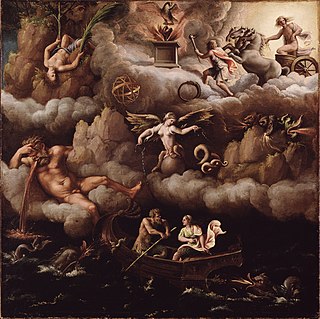
A monster is a type of fictional creature found in horror, fantasy, science fiction, folklore, mythology and religion. Monsters are very often depicted as dangerous and aggressive, with a strange or grotesque appearance that causes terror and fear, often in humans. Monsters usually resemble bizarre, deformed, otherworldly and/or mutated animals or entirely unique creatures of varying sizes, but may also take a human form, such as mutants, ghosts, spirits, zombies, or cannibals, among other things. They may or may not have supernatural powers, but are usually capable of killing or causing some form of destruction, threatening the social or moral order of the human world in the process.

Vampire literature covers the spectrum of literary work concerned principally with the subject of vampires. The literary vampire first appeared in 18th-century poetry, before becoming one of the stock figures of gothic fiction with the publication of Polidori's The Vampyre (1819), which was inspired by the life and legend of Lord Byron. Later influential works include the penny dreadful Varney the Vampire (1847); Sheridan Le Fanu's tale of a lesbian vampire, Carmilla (1872), and the most well known: Bram Stoker's Dracula (1897). Some authors created a more "sympathetic vampire", with Varney being the first, and more recent examples such as Moto Hagio's series The Poe Clan (1972–1976) and Anne Rice's novel Interview with the Vampire (1976) proving influential.

Nosferatu: A Symphony of Horror is a 1922 silent German Expressionist vampire film directed by F. W. Murnau and starring Max Schreck as Count Orlok, a vampire who preys on the wife of his estate agent and brings the plague to their town.
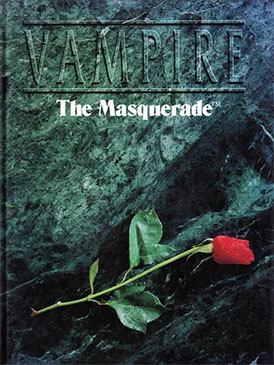
Vampire: The Masquerade is a tabletop role-playing game created by Mark Rein-Hagen and released in 1991 by White Wolf Publishing as the first of several Storyteller System games for its World of Darkness setting line. It is set in a fictionalized "gothic-punk" version of the modern world where players assume the role of vampires, who are referred to as "Kindred." and deal with their night-to-night struggles against their own bestial natures, vampire hunters, and each other.

The Vampire Chronicles is a series of gothic vampire novels and a media franchise, created by American writer Anne Rice, that revolves around the fictional character Lestat de Lioncourt, a French nobleman turned into a vampire in the 18th century.

Count Orlok, commonly but erroneously known as Nosferatu, is a fictional character who appears in the silent film Nosferatu (1922) and its subsequent remakes, which is based on Bram Stoker's character Count Dracula.
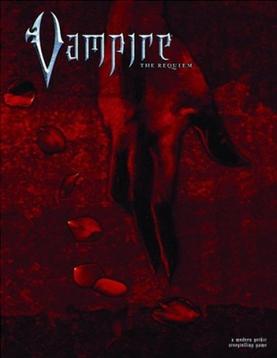
Vampire: The Requiem is a role-playing game published by White Wolf, Inc. for the Chronicles of Darkness setting, and the successor to the Vampire: The Masquerade line. Although it is an entirely new game, rather than a continuation of the previous editions, it uses many elements from the old game including some of the clans and their powers. In the first edition, it required the World of Darkness core rulebook for use, and was released alongside it in August 2004.

Wilhelmina "Mina" Harker is a fictional character and the main female character in Bram Stoker's 1897 Gothic horror novel Dracula.
Vampires are fictional characters appearing in American comic books published by Marvel Comics. The concept of the Vampire has been depicted by Marvel to varying degrees of significance. Bearing a strong resemblance to their literary counterparts, Marvel vampires are mostly an undead subspecies of humans that sustain their immortality and paranormal power by drinking the blood of living humans. Unlike most other depictions of the creature, these vampires have their roots in both the supernatural and biology. Victims are converted to vampirism via enzymes carried in the vampire's saliva, which cause reanimation once introduced into the bloodstream during feedings.

Vampire films have been a staple in world cinema since the era of silent films, so much so that the depiction of vampires in popular culture is strongly based upon their depiction in films throughout the years. The most popular cinematic adaptation of vampire fiction has been from Bram Stoker's 1897 novel Dracula, with over 170 versions to date. Running a distant second are adaptations of the 1872 novel Carmilla by Sheridan Le Fanu. By 2005, the Dracula character had been the subject of more films than any other fictional character except Sherlock Holmes.
A moroi is a type of vampire or ghost in Romanian folklore. A female moroi is called a moroaică. In some versions, a moroi is a phantom of a dead person which leaves the grave to draw energy from the living.
Vampire hunter or vampire slayer is a fictional occupation in folklore and fiction which specializes in finding vampires, and sometimes other supernatural creatures. A vampire hunter is usually described as having extensive knowledge of vampires and other monstrous or undead creatures, including their powers and weaknesses, and uses this knowledge to effectively combat them.

Vampires are frequently represented in popular culture across various forms of media, including appearances in ballet, films, literature, music, opera, theatre, paintings, and video games.
"Nosferatu" has been presented as an archaic Romanian word synonymous with "vampire". It was largely popularized in the late 19th and early 20th centuries by Western fiction such as the gothic novel Dracula (1897) and the German expressionist film Nosferatu (1922). One of the suggested etymologies of the term is that it is derived from the Romanian Nesuferitu`.
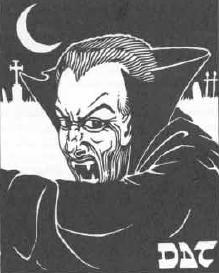
In the Dungeons & Dragons fantasy role-playing game, a vampire is an undead creature. A humanoid or monstrous humanoid creature can become a vampire, and looks as it did in life, with pale skin, haunting red eyes, and a feral cast to its features. A new vampire is created when another vampire drains the life out of a living creature. Its depiction is related to those in the 1930s and 1940s Hollywood Dracula and monster movies. In writing vampires into the game, as with other creatures arising in folklore, the authors had to consider what elements arising in more recent popular culture should be incorporated into their description and characteristics.
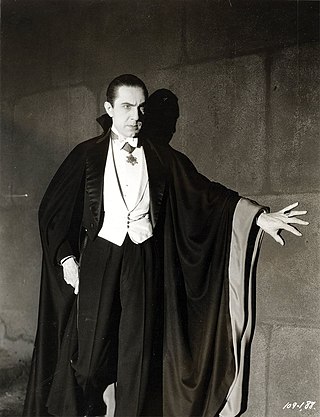
Count Dracula is the title character of Bram Stoker's 1897 gothic horror novel Dracula. He is considered the prototypical and archetypal vampire in subsequent works of fiction. Aspects of the character are believed by some to have been inspired by the 15th-century Wallachian prince Vlad the Impaler, who was also known as Vlad Dracula, and by Sir Henry Irving, an actor for whom Stoker was a personal assistant.

Legends of vampires have existed for millennia; cultures such as the Mesopotamians, Hebrews, ancient Greeks, and Romans had tales of demonic entities and blood-drinking spirits which are considered precursors to modern vampires. Despite the occurrence of vampire-like creatures in these ancient civilizations, the folklore for the entity known today as the vampire originates almost exclusively from early 18th-century Central Europe, particularly Transylvania as verbal traditions of many ethnic groups of the region were recorded and published. In most cases, vampires are revenants of evil beings, suicide victims, or witches, but can also be created by a malevolent spirit possessing a corpse or a living person being bitten by a vampire themselves. Belief in such legends became so rife that in some areas it caused mass hysteria and even public executions of people believed to be vampires.
John Edgar Browning is an American author, editor, and scholar known for his nonfiction works about the horror genre, Dracula, and vampires in film, literature, and culture. Previously a visiting lecturer at the Georgia Institute of Technology, he is now a professor of liberal arts at the Savannah College of Art and Design in Atlanta, Georgia.
